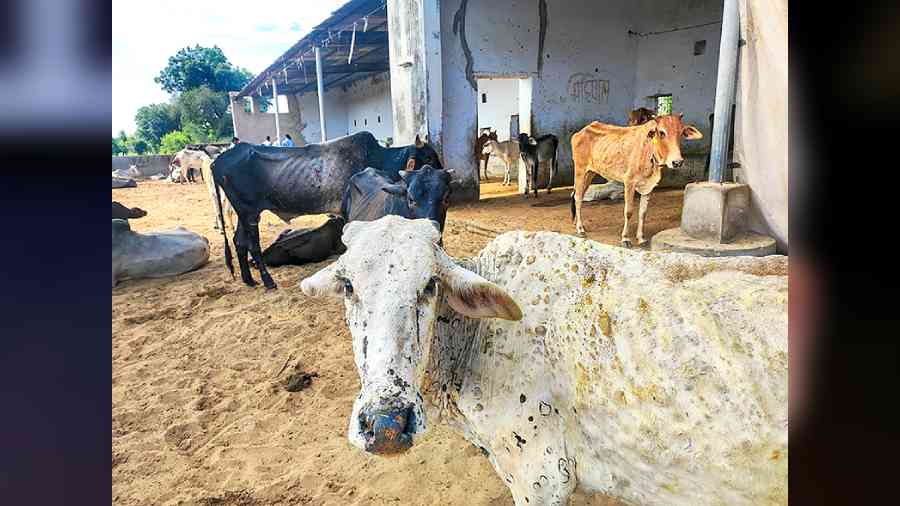Bablu Godara, a dairy farmer in Bikaner, lost five of his 17 milch cows within a few days in August this year as rains belted his region and a devastating surge of a virus engulfed the cattle in much of his district, affecting hundreds of dairy farmers. He barely managed to safeguard his other bovines. His loss was not merely that of cattle or milk sales, but of an economy that would take years to rebuild.
In food systems where dairy is the mainstay, the loss of milch cows is a sorry spectre. In Bikaner, many farmers actually perform post-death rituals for their departed cows. Not this year, because a large number of cows perished during the incessant rains in July through September.
India has been in the midst of a deadly viral epidemic among cattle called the lumpy skin disease caused by a vector-borne virus that is endemic to Africa and is wreaking havoc in India. Over one lakh cows have died and nearly two million affected. Rajasthan is the epicentre with nearly 70 per cent of the mortality and afflicted cow populations there. Maharashtra was in its throes in 2019; this year, it’s prevalent mostly in the western parts.
As monsoon abates, LSD cases are stabilising. But the crisis hasn’t evoked the kind of sentiment cows usually do in a socio-religious sense. The mortality of the current LSD outbreak is up to 15 per cent, particularly in western Rajasthan, according to reports. But the extent of loss to farmers, small or big, isn’t yet fully quantified.
A Food and Agriculture Organisation risk assessment study, based on information available from 2019-2020, said that LSD’s economic impact on the South, East and Southeast Asian countries “was estimated to be up to $1.45 billion in direct losses of livestock and production”. India is the world’s largest milk producer at about 210 million tonnes annually. We also have the largest headcount of cattle and buffalo worldwide.
LSD is caused by a vector-transmitted virus of the capripoxvirus genus in the poxviridae family. The symptoms are nodules of 2-5 cm diameter all over the body, particularly around the head, neck, limbs, udder and genitals. The lumps gradually open up like large and deep wounds. Apart from close contact with an infected animal, the disease mainly spreads through blood feeding vectors like biting flies, ticks and mosquitoes that thrive in the monsoon.
The FAO has suggested a series of steps to curtail its spread, including the vaccination of susceptible populations, movement control of bovine animals and quarantining, among other things. By September end, several states had vaccinated large populations of cows. The only vaccine said to be effective is the goat pox vaccine, while the Indian Council of Agriculture Research has said that it has got a breakthrough with a new vaccine to control LSD, commercial trials for which are slated to begin soon after which its efficacy would be known.
The LSD epidemic leaves us with many challenges. It’s here to stay, according to most veterinary experts. Its current outbreak itself will leave longterm impacts on our dairy and farm economy. The cows that have contracted the virus would take a long time to recover — their milk yields will be crippled and their reproductive cycle will remain affected too. India needs a well-crafted strategy to safeguard the bovine populace from LSD — one that goes beyond socio-religious symbolism and earnestly tackles its economic fallout.










